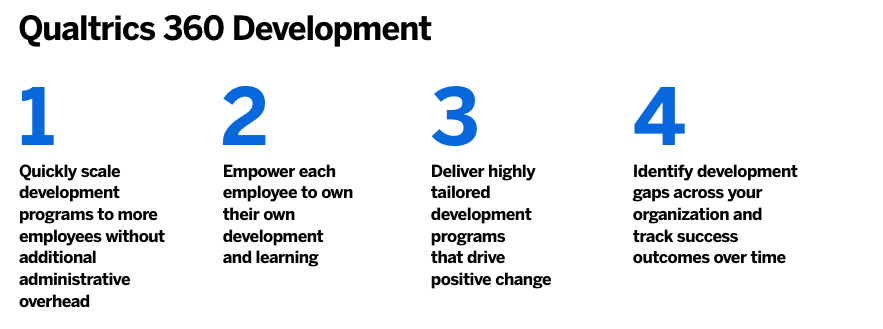The 360-degree feedback system enables employees to receive feedback about their performance from coworkers, including subordinates. You can enhance your performance and job satisfaction by offering your manager feedback. Knowing how to provide your boss with 360-degree feedback can strengthen your bond and give your superior a better understanding of the issues that are important to you at work. In this article, we examine the procedures for providing your manager with 360-degree feedback and offer examples to serve as a guide.
Table of Contents
What Is 360 Feedback?
A 360-degree feedback mechanism, also known as 360-degree feedback, evaluates an organization’s employees’ performance based on feedback from those who interact and collaborate with them. This may apply to their supervisors, coworkers, interns, and even clients. A company might request that you evaluate your manager’s performance from all angles. You might decide to highlight their positive traits while also offering advice on how to get better.
What To Keep In Mind?
There are a few things to think about when giving your manager advice, just like with any kind of feedback. Making sure your feedback is helpful and well-received will require that you consider the following:
- Remove emotion from the equation
- Back it up with facts and data
- Consider how you would respond to the tone
- Be direct and precise
- Be open to communication about the feedback
- Avoid accusatory language
- Identify a fix, not just a complaint
How To Give 360 Feedback To Your Boss?
The following steps will help you give your manager 360-degree feedback:
1. Start With Positive Feedback
It’s wise to start your 360-degree feedback by praising your manager’s performance. If you were to offer helpful criticism later on in the review, this could mitigate the effects of negative feedback. It also provides some balance to the criticism and demonstrates that you aren’t just concentrating on the other person’s errors.
2. Review Your Relationship
While some businesses require 360-degree feedback, you can control how much information you disclose. Your relationship with your manager may influence what you say about their performance. Honesty in your assessment is appropriate if it’s someone you trust. The best course of action is to maintain positive feedback if trust is low.
3. Give Examples
You have the option of providing objective 360-degree feedback that is supported by statistics and case studies. Give examples to support your claims in addition to listing your manager’s pro or con actions.
For instance, you might say, “Mr. Daniel frequently interrupts others when they make points and doesn’t take into account alternative points of view,” as opposed to, “Mr. Daniel doesn’t listen to employees.” The manager disagreed with me before I could finish my point at the previous meeting, so he diverted the conversation.”
4. Plan Your Feedback
Your feedback is more likely to be useful if you plan it. Planning your feedback ensures that it covers all the crucial facets of the manager’s performance. Here is a template for planning manager feedback:
- Analyze your leadership style: your relationship with your manager often depends on their leadership style, so it deserves a spot in your feedback. Examine your supervisor’s management style and make a list of its strengths and potential improvement areas.
- Consider conflict hotspots: 360-degree feedback allows you to highlight areas of conflict with your manager. This is crucial for resolving conflicts and enhancing relationships. You can note the instances in your review where your manager made you feel frustrated or annoyed.
- Analyze systems and processes: if your supervisor has a special process or system for work, your feedback could contain your thoughts about it. Both the positive aspects of the current system or process and the areas for improvement should be mentioned.
- Examine the positives: while preparing your feedback, identify areas where your supervisor performs their job effectively. Consider the interactions you’ve had in the past, make a list of your manager’s strengths as a person or as a leader, and mention those qualities in your feedback.
5. Practice
Practice your delivery before giving your manager feedback in person. Ask a friend or dependable coworker to watch you give feedback. Observe how they respond, then modify your delivery based on their suggestions.
6. Be Empathetic
Try to convey your criticism in a way that demonstrates your desire to help the other person. Imagine yourself in the other role and pay attention to how you’d feel if you got that kind of feedback. The likelihood that your boss will respond favorably to your feedback can be increased by demonstrating empathy.
7. Be Objective
To make the most of the opportunity, it’s critical to be objective when providing your manager with feedback. Not your judgment, but facts and observations may have an impact on how you evaluate their performance. Keeping an objective perspective can also help you avoid conflict if your manager questions your claims.
Why Should You Provide 360-degree Feedback To Your Manager?
The following are advantages of providing your manager with 360-degree feedback:
Improves Relationship
Giving your manager constructive criticism can help maintain your positive working relationship. A good manager can respect your confidence and value your contribution if they recognize the value of constructive criticism. Sincere criticism can help them develop their leadership skills and further their capacity to increase productivity.
Provides Evidence In The Event Of A Dispute
Powerful 360-degree feedback can act as a mechanism for resolving conflicts. In the event of a disagreement, bringing your manager’s attention to any inconsistencies in their behavior or management style will support your position. You can persuade other superiors to support your position by demonstrating that you made an effort to express your concerns to your manager.
Increases Job Satisfaction
The relationship you have with your manager may affect how content and satisfied you are at work. You can air your complaints about the job or the management style of your boss using a 360-degree feedback mechanism. It can aid in conflict management and boundary setting for a positive working environment.

Improves Performance
Your feedback may be used to persuade your supervisor to change their managerial style if it restricts your ability to perform. Your productivity might rise as a result, which would improve your performance at work. Your manager might not even be aware that changing their leadership style would be advantageous without your feedback.
Examples Of Positive Reinforcing And Redirecting Constructive Feedback
The two main categories of feedback are as follows: positive and negative. People need to hear that they are doing well in order to thrive. However, when an employee’s work falls short of expectations, they need to hear supportive criticism. Surprisingly, 57% of employees prefer to hear corrective feedback rather than praise, but there’s a skill to delivering both in a respectful and actionable way.
Positive (reinforcing) Feedback
By giving the employee positive reinforcement for their current behaviors or abilities, you can encourage them to keep doing so. Here are some illustrations of how to reinforce outstanding work with gratifying comments:
- “During that trying customer call, you really kept your composure. That’s a fantastic illustration of the kind of first-rate service for which our company is renowned.”
- “You took the initiative on that project, and I saw that you had some really good ideas. You have a unique way of thinking, and I appreciate that. Keep it up!”
- Negative (redirecting) Feedback Delivering feedback that has been redirected presents more of a challenge. The focus is on the areas where the employee could improve and the steps they can take to do so. Remember that an employee should never be surprised by this kind of feedback. Prior knowledge of the problems will give them more time to process and consider the circumstances. Here are some illustrations of how to give feedback that is redirected.
- “Regrettably, the team was delayed by your work on this project, which was late. Can we come to some sort of agreement on a strategy to make sure this never happens again?”
- “I’ve noticed that you don’t seem as focused or engaged as usual, which, regrettably, has an effect on your work and the morale of the team. If there is anything we can do to help, kindly let us know.”
Tips For Giving Feedback To Your Manager
To give your manager feedback, consider the following suggestions:
- Be honest; make an effort to keep your comments succinct and limited to the important information. It shows that you considered your feedback before providing it if you keep your statements brief and to the point.
- Word choice is important: while you want to be honest in your feedback, choosing your words carefully is advisable. Be careful not to generalize or make judgments in your statements.
- Make it impersonal: If you want to give your manager feedback, keep the criticism objective and impersonal by concentrating on the problem. This lessens the likelihood that your manager will become defensive and averts further conflict.
- Employ a formal tone: watch your tone and make efforts to keep your emotions in check when giving your manager direct feedback. Even though giving feedback might elicit a range of feelings, using a measured tone can help you maintain professionalism throughout the review process.
- Be specific; if your manager can clearly understand what needs to change, they are more likely to consider your constructive criticism. Both the areas that need more work and the ones that are good should be highlighted.
It’s important for all of us to remember that the point of feedback is not to be patronizing or point out flaws; the point is to identify areas for growth and celebrate what’s working well. We all benefit from keeping this in mind and providing constructive manager feedback. In a similar vein, offering constructive criticism to your coworkers can help the team perform better, especially if it is done so.





